185 views
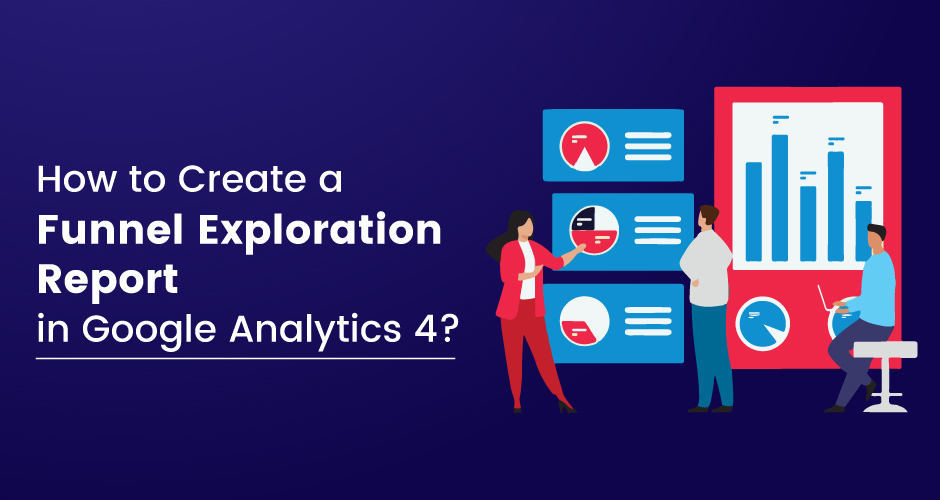
In the vast realm of digital analytics, understanding user behavior is similar to starting a thrilling journey through an intricate network. Google Analytics 4 (GA4) serves as your trustworthy guide, revealing insights that were once hidden. One such treasure in GA4’s arsenal is the Funnel Exploration Report—a powerful tool that discloses the intricate journey of your website visitors, providing a roadmap to optimization. In this blog, you will explore the concept of funnel exploration and understand how to create a funnel report in GA4.
What is a Funnel Exploration Report?
A funnel is a path your visitors take to get to a certain point on the website by visiting different web pages and/or completing various actions to accomplish the objectives you have set, for example – submitted form, lead generation, eCommerce purchases, and so on.
In Google Analytics 4, the funnel exploration report helps you visualize that path, making it easier for you to analyze where visitors are losing interest in your website. Now the question arises what is the significance of analyzing the funnel exploration report?
The ability to pinpoint where users abandon the funnel is invaluable. It is not just about numbers; it is about understanding the intent behind each step. By analyzing these drop-offs, marketers can tailor campaigns, recognizing that a user at the final step is vastly different from one who abandons midway. The report becomes a canvas for crafting personalized strategies, ensuring you do not just retain visitors but guide them towards your ultimate goal.
How to Create a Funnel Exploration Report in GA4?
You can begin this journey by analyzing a few steps. By understanding these steps, you can easily create a funnel exploration GA4 and analyze the data exported in the report.
Accessing the Funnel Exploration Report:
Once you have logged into your GA4 account, head to the left panel and navigate to the Explore section. Here lies the gateway to a trove of reports. You need to seek out the Funnel Exploration Report from the template’s gallery. It is your portal to explore the mysteries of user journeys.

Variables: Navigating the Building Blocks:
In the enchanted setup interface, you encounter three magical sections: Variables, Tab Settings, and the Report. Let’s delve into the Variables—the building blocks of your funnel report.
- Exploration Name and Date: Naming conventions matter. Choose a name that resonates not just with you but with fellow navigators in your organization. Dates, an essential component of analytics, offer the power to travel through time, influencing the data you explore.

- Segments: These are your partners or groups of visitors that work closely to help in the analysis of the data. Apply segments to compare and contrast different groups, unlocking insights that might remain hidden otherwise. Create custom segments with a simple click, shaping your narrative.
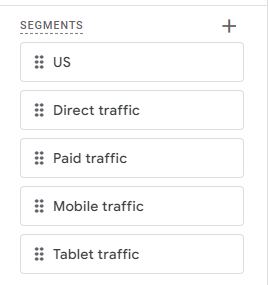
- Dimensions: Imagine dimensions as the complex pattern through which you view your data. Select attributes from a variety of options—events, users, e-commerce—painting a vivid picture of the journey. Click, select, and watch dimensions weave into your narrative.
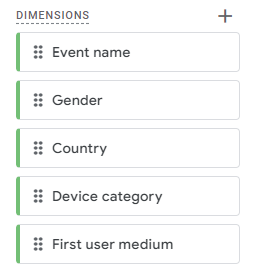
- Metrics: Here’s a twist—the report is inherently user-based, metrics remain spectators.
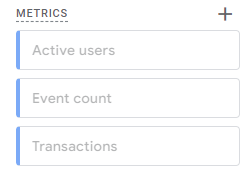
Also Read: Path Exploration Report , Free Form Report
Tab Settings: Crafting the Narrative:
With Variables in place, you step into the Tab Settings, an arena where the report takes its final form. Nine categories are there in the tab settings section.
- Technique: Choose your storytelling style. Six options range from free-form exploration to cohort exploration. For our journey, the spotlight is on the Funnel Exploration Report.
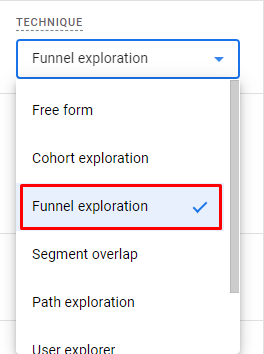
- Visualization: In this section, there are two options: Standard Funnel and Trended Funnel. You can opt for the standard funnel—a bar chart mirroring drop-offs at each step. It is the classic choice, the visual anchor for your exploration.
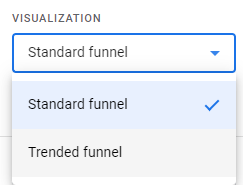
- Open/Close Funnel: The decision to open or close your funnel mirrors the very essence of inclusion. A closed funnel tallies only those who embark on the first step; an open one welcomes all, regardless of their starting point. You can choose wisely from the two options as it shapes your audience count.
- Segment Comparisons: Now, your cohorts step into the spotlight. Apply up to four segments, each with its own color-coded narrative. Hover over, and witness data of the users’ exploration in the website.
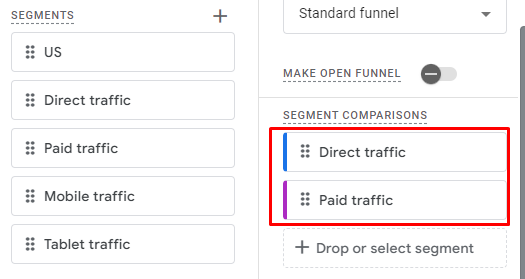
- Steps: Here lies the crux of your funnel exploration report. This is where you set up the steps for your funnel report.
If there are any steps in your funnel reports that you do not need, you can easily get rid of them. To add or make changes to your steps, just click on the pencil icon. Inside the Edit Funnel Steps interface, you can name your step and set up the conditions.
To do this, click on “Add new condition”. You will see a list of pre-existing events and any custom dimensions you may have. If you know the event you are looking for, searching can be a quicker way to find it.
You can also add more conditions using the OR/AND buttons in the interface. Want to be more specific? You can even add parameters to your events.
Now, the next step settings allow you to choose:- Is indirectly/directly followed by
- Within a specific time duration (seconds, minutes, hours, and days)
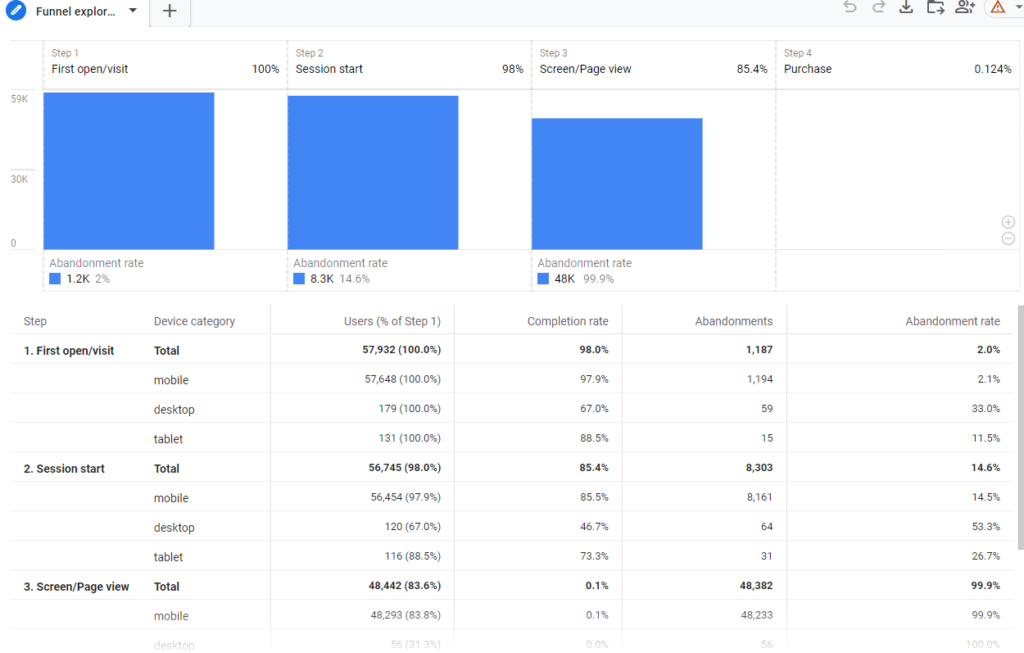
Each funnel step setting also gives you options like copying a step, removing a step, adding a step above, or adding a step below. Just click on the three dots in the right corner to access these options.
- Breakdown: You can also break down the data under the funnel visualization chart. For instance, if you want to see how the funnel performs on different devices, you can choose to add the Device category in the breakdown. Now, let’s say your chosen category has lots of different aspects. You can decide how many rows of details you want to see for each aspect. This is accessible when dealing with multiple dimensions.
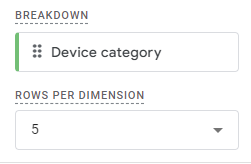
- Show Elapsed Time: Do you want to find out how much time your website visitors take to move from one step to the next? If yes, then you can enable the Show elapsed time to see the time it takes in the column right next to each step.

- Next Action: If you are interested in knowing about the next actions your users are taking after each step, then you can add the Event name dimension. Hover over the funnel graph to view the Top 5 Next Actions. Now, let’s say there is a specific event you want to exclude from these top actions. you can use a segment to filter it out. Keep in mind that the filter option in the tab settings won’t work directly on these actions.

- Filters: Filters can be very helpful if you are seeing a lot of generic data. You can drag and drop any dimension created already in the Dimensions tab and also create a filter based on the match type.

These are the steps that are helpful in creating the funnel exploration Google Analytics 4.
Conclusion: The Journey Continues
As you emerge from the depths of the Funnel Exploration Report, it is important to remember that this is not an end but a continuation. In this digital journey, understanding the twists and turns of user journeys is an ongoing search. GA4, your compass, and the Funnel Exploration Report, your treasure map, guide you through this journey. GA4’s Funnel Exploration Report not only visualizes paths but empowers marketers to shape them, ensuring that every visitor’s journey aligns with the ultimate goals.
- SEO Powered Content & PR Distribution. Get Amplified Today.
- PlatoData.Network Vertical Generative Ai. Empower Yourself. Access Here.
- PlatoAiStream. Web3 Intelligence. Knowledge Amplified. Access Here.
- PlatoESG. Carbon, CleanTech, Energy, Environment, Solar, Waste Management. Access Here.
- PlatoHealth. Biotech and Clinical Trials Intelligence. Access Here.
- Source: https://www.w3era.com/funnel-exploration-report/



